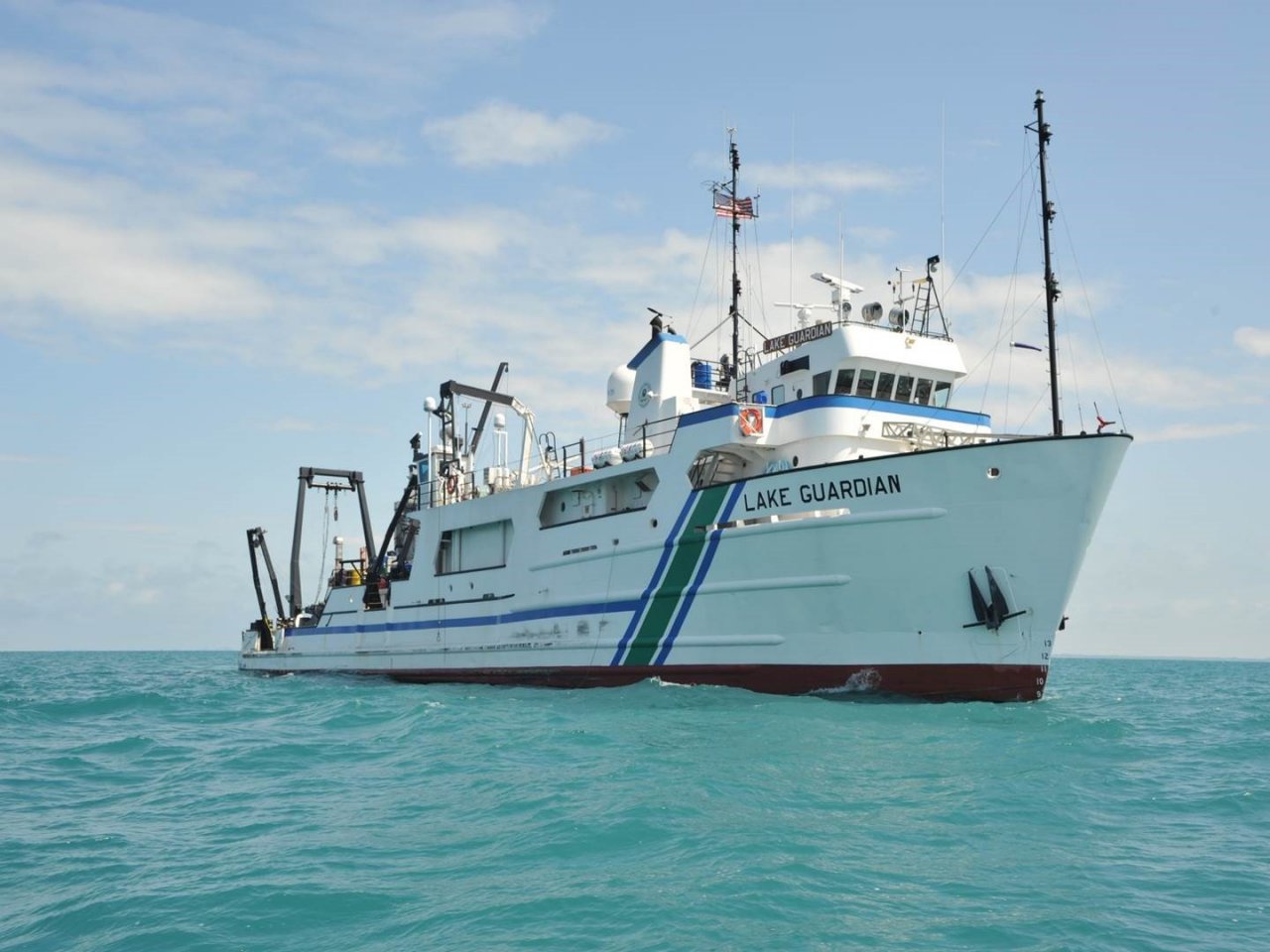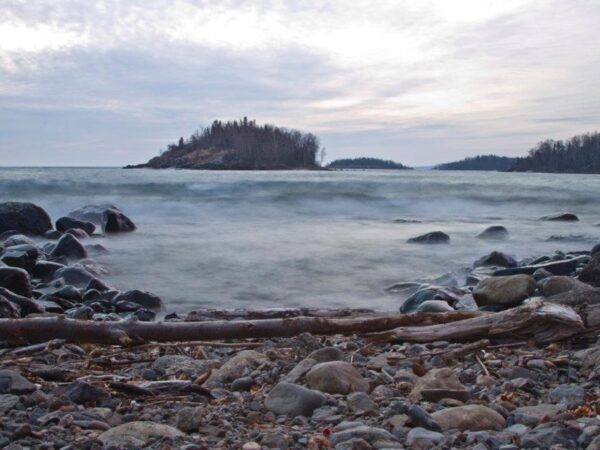
The Lake Guardian is currently in its winter home, nestled along the docks in Milwaukee, Wisconsin. In warmer months, the Environmental Protection Agency (EPA) uses this ship to gather data on water quality, and has for over forty years. And each year since 1991, a group of lucky educators has squeezed on board and, for nine days, also called this ship home.
The ship leaves the dock every April and travels around each of the Great Lakes with different research goals in mind. Each summer features a different lake for the teachers; last year, the Shipboard Science Workshop took teachers around Lake Ontario. In 2024, educators will tour Lake Erie.
Teachers are required to be from one of the eight Great Lake states (Minnesota, Wisconsin, Illinois, Indiana, Michigan, Ohio, Pennsylvania, or New York). Eligible educators must work with grades 5-12 and include a personal statement and letter of recommendation. Submissions for next summer are due at noon on Monday, February 19.
Life on Lake Guardian
A relatively small dredger at 180 feet, the research vessel is white and accented with text, lines, and stripes of sapphire blue. It has one bright green stripe that runs diagonally up from the hull toward the bow and command center, bordered by two narrower stripes of the same accented blue. Once inside the ship, everything looks like painted steel.

EPA’s Lake Guardian research vessel conducting sampling on the Great Lakes. (Credit: Environmental Protection Agency)
The crew, researchers, and educators squeeze onto tiny bunks with one to three other roommates. The vessel sleeps 42 people; 15 are teachers, 14 are crew, and the rest are scientists and Sea Grant staff. Nate Drag, of the New York Sea Grant, describes the experience as intense but exhilarating. With something going on at all times, in-between labs there are lesson plans. The teachers and scientists rotated in different groups.
“Our main goal is to educate the kids from that experience,” said Drag, adding that some participants were not formal educators. Some worked at nature centers (like the Michigan DNR) or museums, so they have a different way to integrate the research into their programs.
Last year, there were three different research projects. One was to better understand the zooplankton community at different depths. A species called mysis relicta, or mysis shrimp, only come up at night to feed because they’re very sensitive to light. They can come up and eat phytoplankton closer to the surface. This meant teachers and researchers had to take samples under a red light on the boat deck, since the normal lights would be too bright and frighten the shrimp back down to further depths.
The next project was headed by Dr. Greg Boyer from the State University of New York School of Environmental Science and Forestry, and Dr. Dominique Derminio from Keuka College. They looked at phytoplankton, the tiny plants eaten by many species, including the mysis shrimp. Specifically, they wanted to see if there was any type of cyanobacteria or potentially harmful algae among the phytoplankton, and to catalog all the different types of algae and phytoplankton found. According to Drag, they put out large nets and pulled them up from different depths. Then, they would filter them; the teachers would go into the lab and try to identify the different species under microscopes and write down information into a big data set.
The final project was looking at the benthic community, the organisms that live in the sediment and muck several hundred meters down at the bottom of Lake Ontario. Drag said, they sent down a device called a ponar grab, which looks like a large metal scoop. It would scoop up the sediment at the bottom of the lake, then pull it up and dump it out in a large tray. Next, the teachers would rinse it, filter it out, and then identify and catalog the different species found in that sediment.
Educator experience
Last year, Beth Schoonover, a high school science teacher from Stow-Munroe Falls High in Stow, Ohio attended the program. She said those nine days on the boat were tough but rewarding being able to learn and participate in “real science.”
“I see 130 students that day, and if I can talk to them and relate to them about ‘real science’ and have them do ‘real science,’ that could be a catalyst for some of them—that’s what you hope for,” said Schoonover.
Schoonover had students throw some yarn to show all the connections of the food web and what happens when something goes away because of over-fishing or pollution. She also took her students out to a lake for a field trip. Several students built nets to catch plankton with a jar and some pantyhose. She also noted that the Sea Grant sent her a hydro-testing kit to help integrate her experience on the Lake Guardian into her classroom.
Carly Ziegler, an educator from Madison, Wisconsin, did the program four years ago when she was still a middle school science teacher. Today, she works at Edgewood Campus School and at Edgewood College, and teaches at summer camps. She still uses her experiences from the Lake Guardian to inform her students. In fact, on the morning of this interview, Ziegler had picked up equipment from the Sea Grant.
“They [Sea Grant] have a whole resource library of stuff you could check out and use,” said Ziegler. “The one I borrowed today is a kit where students engineer their own underwater robots; it uses tiny little motors, hangers, duct tape, and foam. And it’s very simple, but the whole kit is there. So, I don’t have to run around the hardware stores like I did for 10 years, gathering random bits and bobs. I can borrow this kit, check it out for a week, have students work on that project, and then return it.”
Ziegler said once you’ve been trained in one of their programs, you can check out their equipment online, and they will ship it to you—at no cost. The Sea Grant even includes a free shipping label, so there’s no cost to return. She noted that access to this interactive equipment makes such a huge difference in how her students approach learning and science. How “when something matters to students” like the health of the Great Lakes, it makes science relevant.
“I hear all the time, like, ‘Ziggler, we’re like doing real science,’” said Ziegler about her students. “I think we don’t give students enough credit for being able to do really difficult things. By the time they’re in middle school, their brains are operating at such a high level, they’re able to really comprehend a lot. And it’s like this, this huge window of opportunity to swoop in and show them your actions make a difference.”
Catch more news at Great Lakes Now:
The future of water management, with Curt Wolf
Tracing for human remains on shipwrecks with environmental DNA
Featured image: Beth Schoonover’s students on a water quality field trip at Ohio’s West Branch Reservoir State Park Reservoir, in 2023. (Credit: Beth Schoonover)



